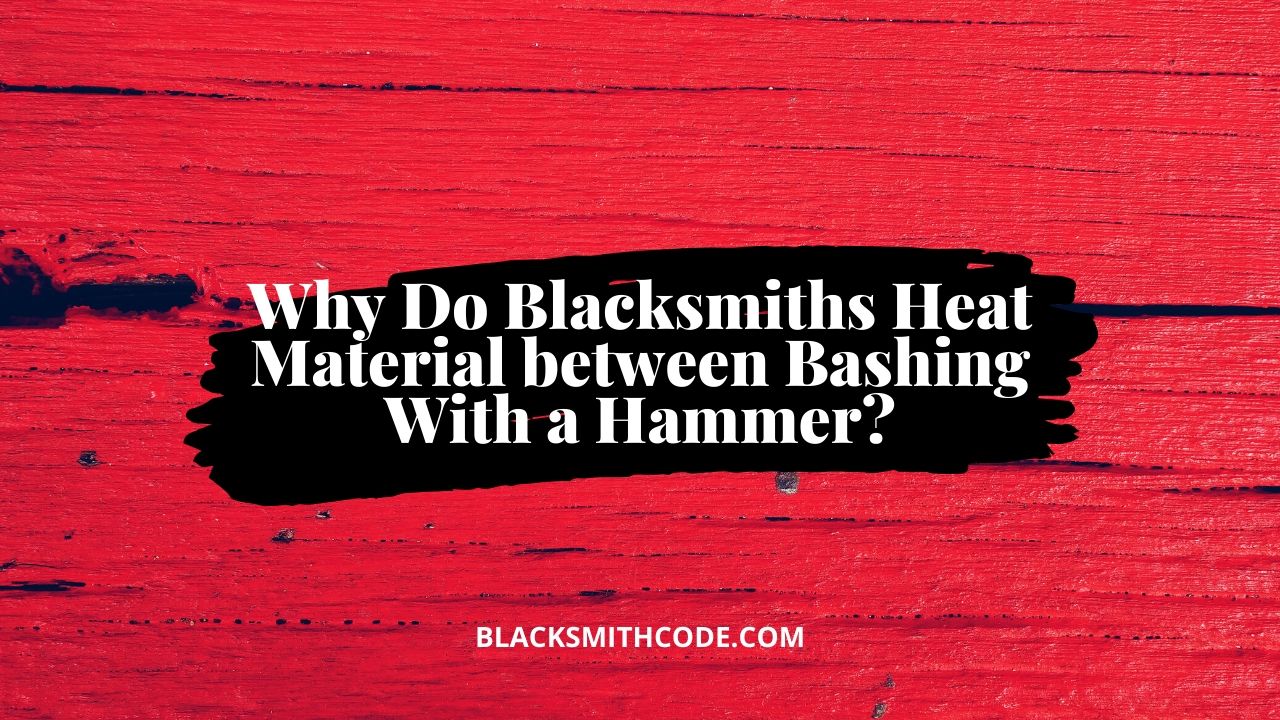Heating materials at intervals during bashing is a common practice among blacksmiths. As simple as it sounds, this simple act can make a lot of difference in how the metal will be forged and how easy you can temper with the metal. Ever wondered why do blacksmiths heat metal?
There are different types of materials. Some are more resilient than others, while some also have higher carbon contents than the rest. This variation indicates that each type of material must be handled uniquely according to their individual properties.
If you find blacksmith heating material between bashing with a hammer, it is principally due to two significant reasons. One of the primary reasons is the multifaceted nature of metals, and the other one is the easy malleability of metal while it is still hot.
Let’s find answers to why do blacksmiths heat metal.
Easy Malleability Of Metal While It Is Hot
One of the basics that form the pillar of blacksmithing in the first place is the heating of metal to beat it to the desired form. A wise blacksmith will only strike or beat metal while it is still hot because cold metal cannot be beaten to shape.
Even when you have heated the metal before, a hot metal will not stay hot forever, and it loses its malleability as it gets colder. The metal will not only get harder with a reduction in temperature, but it will also become more brittle. Consequently, the metal will be hard for the blacksmith to work on it effectively.
Therefore, when a blacksmith heats metal to start working on it, he ensures that the temperature is always in a workable region while working on it. To ensure this average temperature while bashing with a hammer, quick heating at intervals might be necessary. Why this is done at this interval is to ensure that the metal does not get completely cold or extremely brittle.
The Multifaceted Nature Of Metals
One of the features that highlight the overall characteristics of metals or iron is its crystalline nature. This crystalline nature explains the variation in the length of metal and alloy with varying temperatures. Metal tends to be longer when heated and becomes shorter when the temperature is reduced.
This variation is because the atomic particle that forms the crystals of metals becomes loosely packed when the temperature is raised. The loose nature of the particles at that point allows you to mold and forge the metal to the desired form. This process explains why blacksmiths heat metals.
A blacksmith can keep the atoms or crystals far apart by consistently heating the metal while bashing with a hammer. Once the metal gets cold during bashing, it has to be heated a little bit to ensure its endless malleability.
Conclusion
Beating or bashing a cold metal is equivalent to a waste of time, energy, and resources. Beating metal or iron to shape can only be possible if the metal is kept at an elevated temperature. Even if you heat the metal before you start bashing, you might still have to heat at intervals because a hot metal will not stay hot until you are done working, especially with projects that need extended time and high crafts and creativity.

